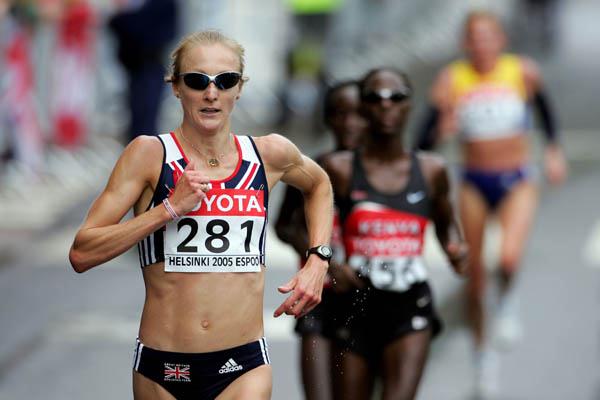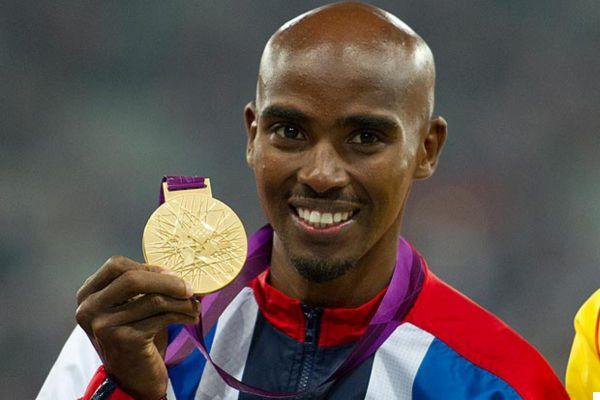Finding Motivation in Sport: Setting Goals
By definition, goal setting is a mental training technique that involves achieving specific goals in a defined amount of time. Confused? Well, actually every day we set hundreds and hundreds of goals for ourselves, sometimes without even knowing it. Buying milk, cooking or just changing channels on TV (short-term goals), until you graduate, become a millionaire within the next ten or fifteen years, or save for a lifetime trip around the world (long-term goals ). What I mean is that setting goals is normal human behavior. However, setting goals is not only an integral part of a successful daily life, it is also a method (and an indispensable component) for optimal sports performance, used by all sportsmen in the world!
"At the beginning of each year, I usually write down my goals and put them in a safe place"
Paula Radcliffe (My Story So Far)

1. Why Set Goals?
Goals increase performance levels by approximately 16% (1). Incorporating goals into your training regimen can affect your performance in 4 ways:
1. Goals offer direction
They direct your training by focusing your attention on goal-related activities and away from irrelevant activities.
For example, if a runner sets a goal of improving cardiovascular performance and muscle strength, then they should focus on these areas (goal-related activities). He shouldn't focus on other tasks like throwing ability (non-goal related activities). This approach would allow him to focus on the most important aspects of his training and make sure that the training is efficient.
2. Goals offer feedback
They allow us to compare our results as we go, so that we understand our improvements.
3. Goals offer motivation
Goals allow for easy performance evaluation and allow you to learn more about your training skills which consequently help replace boredom with challenge, giving you the boost! As you reach your goals, motivation will increase and fears and tensions will be replaced with focus and confidence. These factors combined lead to a rewarding workout.
For example, an overweight man who wants to lose 20 kg might think it is impossible, especially since he has been overweight for most of his life. By setting the goal of losing one pound per week, he can stay motivated and persist in achieving his weight loss goal until he reaches it. Similarly, a runner who wishes to run 10km with a finish time of less than 5 minutes may not be motivated to progress day by day. Setting goals such as a shorter time of about 5-10 seconds a day will allow him to see progress towards the long-term goal, with small daily goals, having a daily purpose and maintaining motivation over time.
4. Goals allow for the development of learning strategies
Once the goals have been set, the individual and the coach can implement strategies aimed at achieving short and long-term sporting goals. For example, if a novice swimmer wants to improve on a specific point, the coach may decide to have them do specific exercises for that purpose to make the training program more effective.
2. The Research Point of View
An interesting study published in the Journal of Applied Behavior Analysis (2) applied the principles just described to the competitive training environment, evaluating the effects on 5 rugby players throughout the season, the results are as follows:
- 5.12 ball carries per match -> 9.10 ball carries per match (78% increase);
- 7.87 tackles per game -> 10.40 tackles per game (32% increase);
- 4.23 missed tackles per game -> 1.90 missed tackles per game (55% decrease);
- 8.70 successful kicks -> 11.00 successful kicks (26% increase);
- 1.33 turnovers won -> 2.90 turnovers won (118% increase).
Scientists concluded that the introduction of goals (goal setting, goal setting and review) provides an effective method for improving specific rugby performance.
Similarly, a study published in the Journal of Applied Sports Psychology (3) evaluated the impact of these techniques on speed skating performance, noting two main findings:
- Setting goals improved training by increasing the number of laps completed and reducing the number of irrelevant behaviors.
- Setting goals has improved times in both training and competition.
The effects of goal setting on the athletic performance of five players were studied by Ward and Carnes (4). They found that Those who set goals have shown immediate improvement in performance in training and consequently this has improved performance during competitions.
Looking at things from a general perspective, research by Burton et al. (5) revealed that 44 of 56 studies (78,6%) indicate that setting goals has moderate or strong effects on training performance.
3. Types of Objectives
We discussed the importance of goals in training, but to understand what setting goals can offer us, there are a few things to consider. There are three types of goals (listed below). The key point to remember is that ideally you should consider all kinds of goals when you are setting goals and your focus should not be totally focused on achieving the ultimate goal (as this is often the case).
'Often it is the process of reaching the goal that offers the greatest reward'
Mo Farah

to. Methodical Objectives
It includes improving the skill level. You are in complete control of your methodical goals and they can be helpful in reducing anxiety before an event. Examples include:
- Improve knowledge of your training program.
- Improve your nutrition.
- Carry out a pre-performance such as talking to yourself, listening to your favorite song.
- Get enough sleep and rest to recover better.
- Follow your training program to the letter.
- Communicate regularly with the coach.
- Make sure that the equipment is in good condition.
b. Performance Goals
Achieve a specific standard (based on your standards). It can encompass everything from losing a certain weight over a certain period or running on the treadmill for a specific distance. These kinds of goals are unaffected by those of others and are therefore totally under your control. They can make you feel satisfied even if you don't achieve your desired end goals.
c. Final Goals
These are goals related to the final product, or rather, the desired end result, such as winning a race or beating an opponent. They are highly motivational goals but unlike methodical goals, the individual is not always able to control them. Rather, they are instead related to the performance of others and how you implement your methodical and performance goals.
Examples include:
- Win a gold medal at the Olympics
- Win a championship
- Defeat a rival in a swimming competition
- Vincere il Tour de France
4. How to Combine the 3 Types of Goals?
A runner who wishes to win a 10km race (final goal) and breaks the 40 minute barrier (performance goal), started by improving his knowledge of the race and later explored workouts and nutrition strategies that could help him achieve the best performance (performance target). On the day of the competition, he unfortunately fails to reach the final goal (finishing second) but manages to reach his performance goal (completing the race in 39 minutes). Consequently, he is satisfied with his performance despite the defeat, remains confident and takes advantage of the knowledge gained from the research carried out before the competition, to improve on the specific 10 km event.
A Message Not To Forget
Setting goals is a very powerful technique for improving performance that can be applied by anyone from professional athletes to amateurs. Goals help you reach your final destination, offer a method for finding the way to go to your destination, and finally let you know when you have reached it. It is important to consider the different types of goals and how they can be implemented in your training regimen, so that you can stay focused on your goals!
References
1. Knowles, Z., Houghton, L., & Jackson, S. (2011). Run Liverpool Marathon Workshops; Goal Setting Presentation (PDF).
2. Mellalieu, SD, Hanton, S., & O'brien, M. (2006). The effects of goal setting on rugby performance. Journal of Applied Behaviour Analysis, 39, 257-261.
3. Wanlin, C. M., Hrycaiko, D. W., Martin, G. L., & Mahon, M. (1997). The effects of a goal-setting package on the performance of speed skaters. Journal of Applied Sport Psychology, 9, 212-228.
4. Ward, P., & Carnes, M. (2002). Effects of posting self-set goals on collegiate football players’ skill execution during practice and games. Journal of Applied Behaviour Analysis, 35, 1-12.
5. Burton, D., & Naylor, S. (2002). In. Advances in Applied Sport Psychology: A Review. Mellalieu, S. D., & Hanton, S. (p. 344).


























